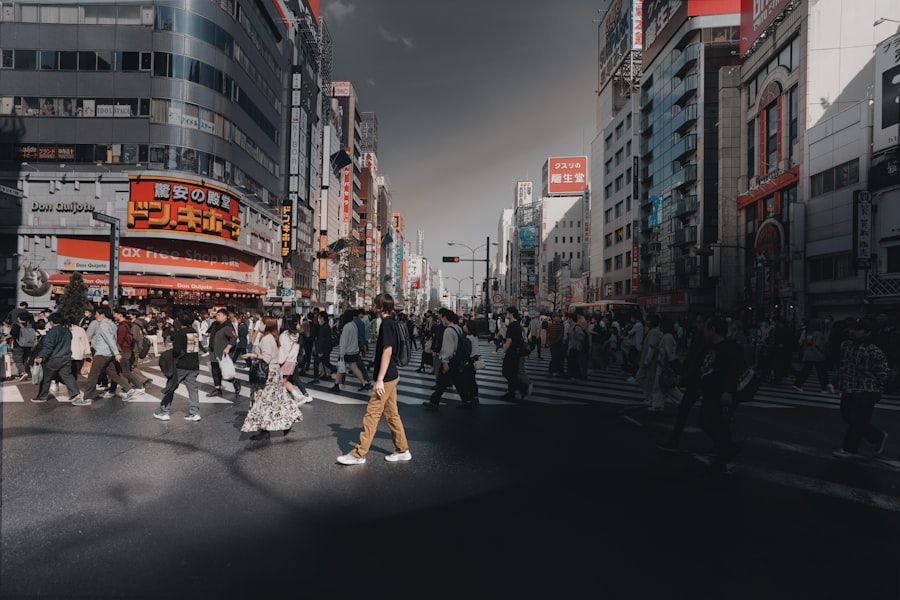When you think of Godzilla, the image of a towering, destructive creature likely comes to mind. However, the evolution of this iconic figure transcends mere monster lore. Initially introduced in 1954 as a terrifying force of nature, Godzilla was born from the ashes of post-war Japan, embodying the fears and anxieties of a nation grappling with the aftermath of nuclear devastation.
The original film, “Gojira,” was not just a monster movie; it was a poignant commentary on the horrors of atomic warfare. As you delve deeper into Godzilla’s journey, you realize that he has transformed from a symbol of destruction into a complex character that reflects societal issues and human emotions. Over the decades, Godzilla has undergone significant transformations, adapting to the changing cultural landscape.
In the 1960s and 70s, he became more of a hero, battling other monsters and defending humanity. This shift allowed audiences to connect with him on a different level, as he transitioned from a mere symbol of fear to a protector of the Earth. By the time you reach the modern iterations, such as the 2014 reboot and its sequels, Godzilla has evolved into a multifaceted character that embodies both destruction and guardianship.
This duality makes him not just a monster but a symbol of resilience and complexity in an ever-changing world.
Key Takeaways
- Godzilla has evolved from a simple monster to a powerful symbol representing various themes and ideas.
- Godzilla has had a significant impact on popular culture and film history, influencing numerous filmmakers and artists.
- The human element in Godzilla films, including characters and relationships, adds depth and emotional resonance to the stories.
- Godzilla serves as a metaphor for human fear and the destructive power of nature, reflecting real-world concerns and anxieties.
- Science and technology play a crucial role in Godzilla films, often highlighting the potential consequences of human innovation and intervention.
Godzilla’s Impact on Popular Culture and Film History
A Cultural Touchstone
As you explore this phenomenon, you realize that Godzilla has become a cultural touchstone, representing not only Japanese cinema but also the global fascination with monsters and the supernatural. In film history, Godzilla stands as a pioneering figure in the kaiju genre, inspiring countless filmmakers around the world.
Pioneering Special Effects
The special effects techniques developed for Godzilla’s early films laid the groundwork for future monster movies, pushing the boundaries of what was possible in visual storytelling. You can trace the lineage of modern blockbusters back to Godzilla’s groundbreaking work, as filmmakers continue to draw inspiration from his colossal presence.
A Lasting Legacy in Film Studies
The franchise has also sparked discussions about genre conventions and the role of monsters in cinema, making Godzilla an essential part of film studies and popular culture discourse.
The Human Element in Godzilla Films: Characters and Relationships

While unity is often portrayed as a monstrous force, the human characters in these films play a crucial role in shaping the narrative. You find that their struggles, relationships, and emotional arcs provide depth to the story, allowing audiences to connect with the film on a personal level. Whether it’s scientists trying to understand Godzilla’s origins or everyday people facing the chaos he brings, these characters serve as conduits for exploring themes of fear, loss, and resilience.
The relationships between characters often mirror the larger themes at play in Godzilla films. For instance, you may encounter stories of sacrifice and heroism as individuals band together to confront the looming threat. These connections highlight the importance of unity in times of crisis, reminding you that even in the face of overwhelming odds, human spirit can shine through.
As you watch these films, you become invested not only in Godzilla’s fate but also in the lives of those who are affected by his presence.
Godzilla as a Metaphor for Human Fear and Destruction
| Aspect | Details |
|---|---|
| Movie Title | Godzilla |
| Metaphor | Human Fear and Destruction |
| Release Year | 1954 |
| Director | Ishirō Honda |
| Box Office | 2.25 million (1954) |
| Impact | Became a cultural icon and spawned numerous sequels and adaptations |
At its core, Godzilla serves as a powerful metaphor for human fear and destruction. You can interpret his rampages as reflections of societal anxieties—be it nuclear warfare, environmental degradation, or unchecked technological advancement. Each time he emerges from the depths of the ocean or rises from the ruins of a city, he embodies our collective fears about what we have created and what we might lose.
This metaphorical aspect is particularly poignant when considering how Godzilla’s destructive power often leads to moments of introspection for humanity. As cities crumble and lives are lost, characters grapple with their own complicity in these disasters. You may find yourself questioning not only what it means to be human but also how our actions contribute to the chaos around us.
In this way, Godzilla becomes more than just a monster; he is a mirror reflecting our deepest fears and the consequences of our choices.
The Role of Science and Technology in Godzilla Films
Science and technology play pivotal roles in Godzilla films, often serving as both saviors and sources of destruction. You will notice that scientists frequently emerge as key characters, striving to understand Godzilla’s origins or find ways to combat his rampages. Their efforts highlight humanity’s quest for knowledge and control over nature, but they also raise ethical questions about our relationship with technology.
As you watch these films unfold, you may find that technology is portrayed as a double-edged sword. While it offers potential solutions to combat threats like Godzilla, it also serves as a reminder of humanity’s hubris. The very inventions designed to protect us can lead to catastrophic consequences when misused or misunderstood.
This tension between progress and peril is central to many Godzilla narratives, prompting you to reflect on how science can both empower and endanger society.
Godzilla and Environmental Themes: Human Responsibility and Consequences

In recent years, Godzilla has taken on an even more pronounced role as an environmental symbol. You may notice that many modern films emphasize themes related to ecological destruction and climate change. As cities are ravaged by his presence, they serve as stark reminders of humanity’s impact on the planet.
This shift reflects growing concerns about environmental degradation and our responsibility toward nature.
You might find yourself contemplating how industrialization and pollution have led to catastrophic events that mirror Godzilla’s rampages.
The films often suggest that our disregard for nature can awaken forces beyond our control—forces that demand respect and responsibility. In this way, Godzilla becomes not just a monster but a harbinger of environmental reckoning.
Godzilla and the Human Spirit: Resilience and Hope in the Face of Disaster
Despite the chaos that follows in Godzilla’s wake, there is an underlying theme of resilience and hope that permeates these films. You will often witness characters rising above despair, finding strength in unity and determination even when faced with overwhelming odds. This resilience serves as a testament to the human spirit’s ability to endure in times of crisis.
As you engage with these narratives, you may find inspiration in how individuals come together to confront adversity. Whether it’s scientists collaborating to devise a plan or communities banding together to rebuild after destruction, these stories highlight the power of solidarity. In many ways, Godzilla becomes a catalyst for change—forcing humanity to confront its vulnerabilities while also igniting a sense of purpose and hope for a better future.
Godzilla’s Enduring Legacy: Connecting with Audiences Across Generations
Godzilla’s legacy is one that transcends time and geography, connecting with audiences across generations. You may find that each new iteration resonates differently depending on cultural contexts and societal issues at play during its release. From its origins in post-war Japan to its status as a global icon today, Godzilla continues to evolve while remaining relevant to contemporary audiences.
As you explore this enduring legacy, you realize that Godzilla represents more than just entertainment; he embodies shared fears, hopes, and aspirations across cultures. His ability to adapt reflects humanity’s ongoing struggle with existential threats—be they environmental disasters or technological advancements gone awry. In this way, Godzilla remains not only a monster but also a symbol of our collective journey through fear and resilience, ensuring that his roar will echo through generations to come.
In a recent article on kaiju.news, the debate over who is more powerful between Godzilla and King Ghidorah is explored in depth. This discussion sheds light on the dynamic relationship between these iconic monsters and how they interact with humans in the Godzilla universe. It is fascinating to see how these larger-than-life creatures impact the human characters and the world around them. This article provides valuable insights into the complex dynamics between Godzilla and humans, highlighting the intricate balance of power and vulnerability in their interactions.
FAQs
What is the relationship between Godzilla and humans?
Godzilla’s relationship with humans has evolved over the years in various films and media. In some iterations, Godzilla is portrayed as a destructive force that humans must combat, while in others, Godzilla is depicted as a protector of humanity.
How do humans interact with Godzilla in the films?
In the films, humans often try to understand and communicate with Godzilla, sometimes forming alliances with the creature to combat other threats. In some instances, humans have also tried to control or destroy Godzilla.
What are some key themes in the relationship between Godzilla and humans?
The relationship between Godzilla and humans often explores themes of coexistence, environmentalism, and the consequences of human actions on the natural world. It also delves into the idea of humanity’s place in the world alongside powerful and uncontrollable forces.
Has Godzilla ever been portrayed as a friend to humans?
Yes, in some films and media, Godzilla has been depicted as a friend and protector of humanity, using its immense power to defend the Earth from other monstrous threats.
How has the relationship between Godzilla and humans evolved over time?
The relationship between Godzilla and humans has evolved from initial portrayals of Godzilla as a destructive force to more nuanced depictions that explore the complexities of coexistence and mutual understanding between the two.
